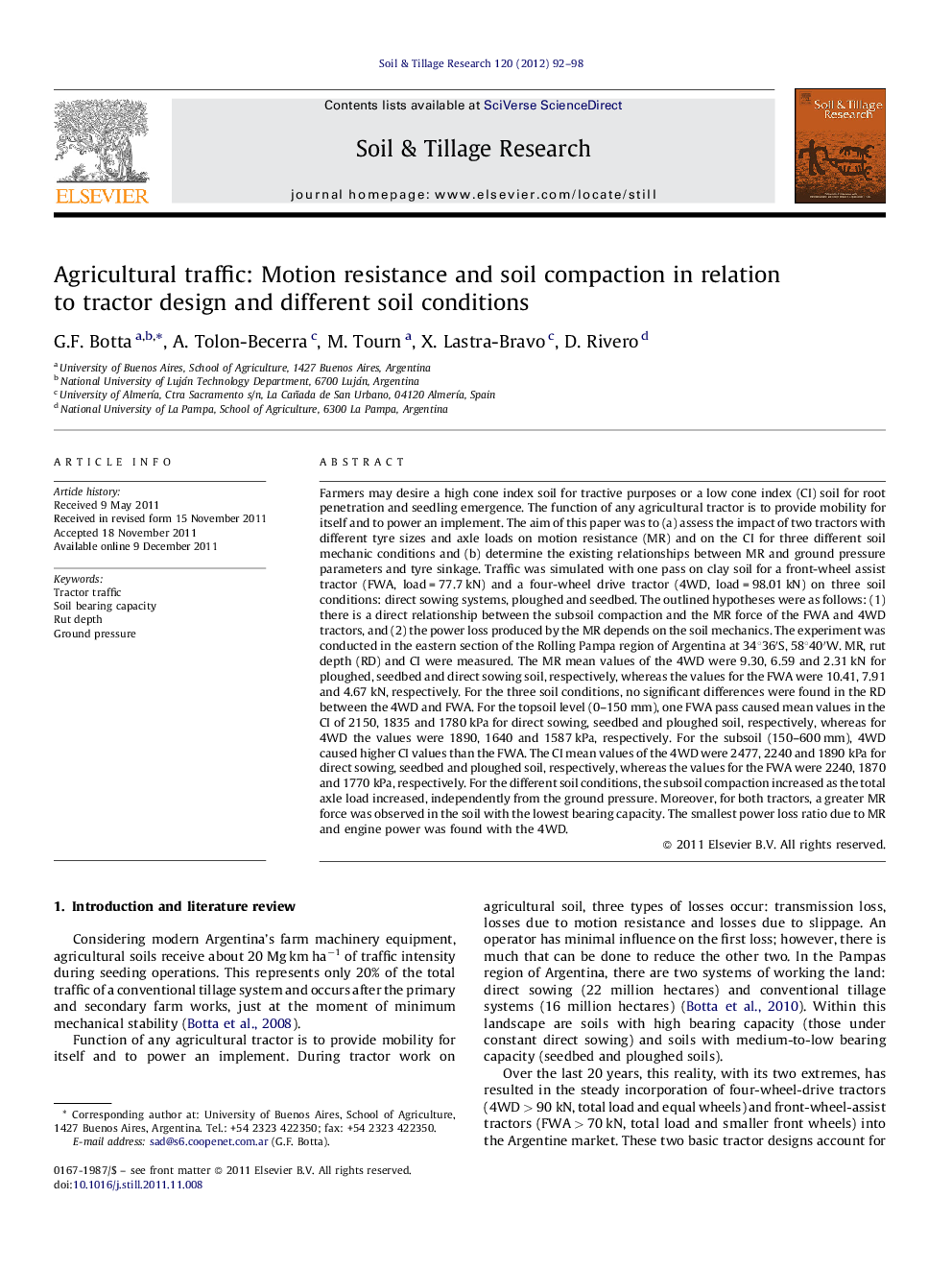| کد مقاله | کد نشریه | سال انتشار | مقاله انگلیسی | نسخه تمام متن |
|---|---|---|---|---|
| 306002 | 513065 | 2012 | 7 صفحه PDF | دانلود رایگان |

Farmers may desire a high cone index soil for tractive purposes or a low cone index (CI) soil for root penetration and seedling emergence. The function of any agricultural tractor is to provide mobility for itself and to power an implement. The aim of this paper was to (a) assess the impact of two tractors with different tyre sizes and axle loads on motion resistance (MR) and on the CI for three different soil mechanic conditions and (b) determine the existing relationships between MR and ground pressure parameters and tyre sinkage. Traffic was simulated with one pass on clay soil for a front-wheel assist tractor (FWA, load = 77.7 kN) and a four-wheel drive tractor (4WD, load = 98.01 kN) on three soil conditions: direct sowing systems, ploughed and seedbed. The outlined hypotheses were as follows: (1) there is a direct relationship between the subsoil compaction and the MR force of the FWA and 4WD tractors, and (2) the power loss produced by the MR depends on the soil mechanics. The experiment was conducted in the eastern section of the Rolling Pampa region of Argentina at 34°36′S, 58°40′W. MR, rut depth (RD) and CI were measured. The MR mean values of the 4WD were 9.30, 6.59 and 2.31 kN for ploughed, seedbed and direct sowing soil, respectively, whereas the values for the FWA were 10.41, 7.91 and 4.67 kN, respectively. For the three soil conditions, no significant differences were found in the RD between the 4WD and FWA. For the topsoil level (0–150 mm), one FWA pass caused mean values in the CI of 2150, 1835 and 1780 kPa for direct sowing, seedbed and ploughed soil, respectively, whereas for 4WD the values were 1890, 1640 and 1587 kPa, respectively. For the subsoil (150–600 mm), 4WD caused higher CI values than the FWA. The CI mean values of the 4WD were 2477, 2240 and 1890 kPa for direct sowing, seedbed and ploughed soil, respectively, whereas the values for the FWA were 2240, 1870 and 1770 kPa, respectively. For the different soil conditions, the subsoil compaction increased as the total axle load increased, independently from the ground pressure. Moreover, for both tractors, a greater MR force was observed in the soil with the lowest bearing capacity. The smallest power loss ratio due to MR and engine power was found with the 4WD.
► Power loss by motion resistance (MR) decreased when soil bearing capacity increased.
► The smallest power loss ratio due to MR and engine power was better for the 4WD.
► Ground pressures data showed smaller values on soil under mouldboard plough.
► One pass a tractor with axle load above 70 kN produced subsoil compaction.
Journal: Soil and Tillage Research - Volume 120, April 2012, Pages 92–98